6 things tourists should know about visiting temples in Thailand, according to a local tour guide
Marielle Descalsota

- Thailand is home to more than 33,000 temples.
- Some of the country's best-known temples include Wat Arun and Wat Rong Khun.
Thailand is a Buddhist country — more than 93% of its population practices the religion. Millions of tourists flock to Thailand every year to visit its thousands of temples.
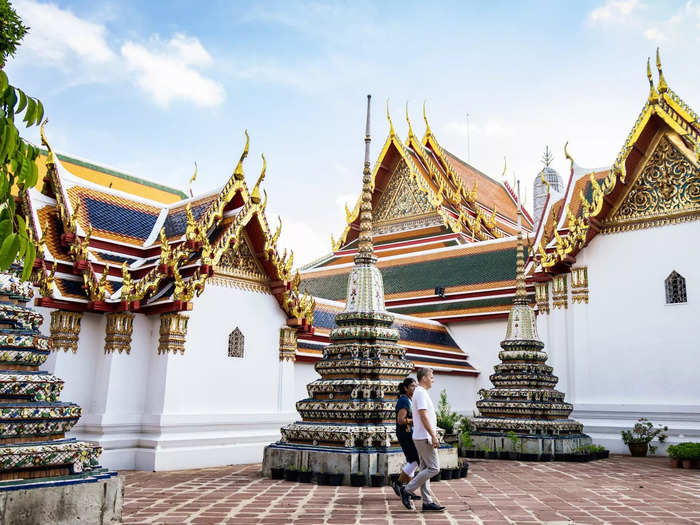
Thailand is home to more than 33,000 temples, ranging from small shrines to massive golden complexes. Many tourists especially enjoy visiting the stunning riverside temple Wat Arun in Bangkok and the pale white temple Wat Rong Khun in the northern province of Chiang Rai.
On a reporting trip to Thailand in late July, I visited several temples and asked a tour guide to share what tips and etiquette tourists should follow when visiting temples.
1. Refrain from wearing revealing clothing, and use the robes provided whenever possible.
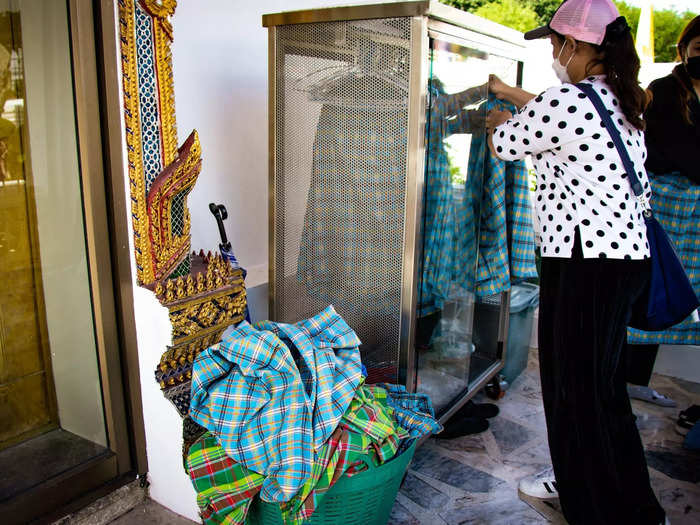
I visited two Bangkok temples, Wat Kalayanamit and Wat Pho, with a local tour guide named Uma Puacksumran.
While I was wearing a mid-length dress that day, Puacksumran advised me to don some outerwear to cover my shoulders before going inside shrines.
Staff at Wat Kalayanamit weren't strict with the dress code, but those at Wat Pho required visitors to dress modestly and provided robes for tourists (pictured above). When visiting major temples, the general rule of thumb is to cover one's legs and shoulders in order to avoid offending locals.
2. Pick up some candles and flowers to pay respects — and don't forget to make a small donation.
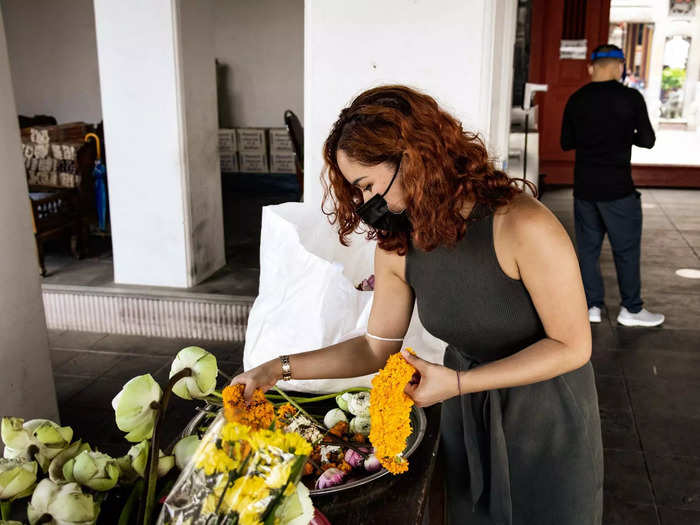
While I've visited dozens of temples all around Thailand, I've never conducted a common temple ritual called "wai phra." Puacksumran told me locals offer flowers and candles to pay their respects at temples.
According to local news site Inspire Bangkok, non-Buddhists are also welcome to perform wai phra. Visitors can bring their own garlands and place them on the appropriate altars and shrines.
If you do decide to use the flowers and candles provided by the temple, remember to give a small donation of several tens of baht after taking the items.
3. Locals typically pray or make a wish before placing incense sticks in a burner.
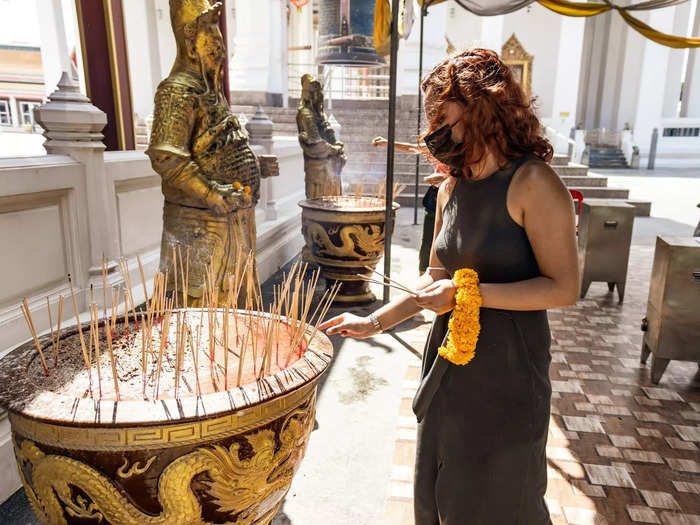
In addition to flowers and candles, incense sticks are also used as offerings. Puacksumran told me one way to offer incense is to place three sticks in between one's hands and to bow towards Buddha. She also instructed me to make a wish before placing the sticks in the burner — at Wat Kalayanamit, I had to repeat this several times.
While burning three sticks is most common, some locals also burn five or seven sticks — the different amount of incense symbolizes different things, from protection to connecting with ancestors.
4. Never step on the threshold.
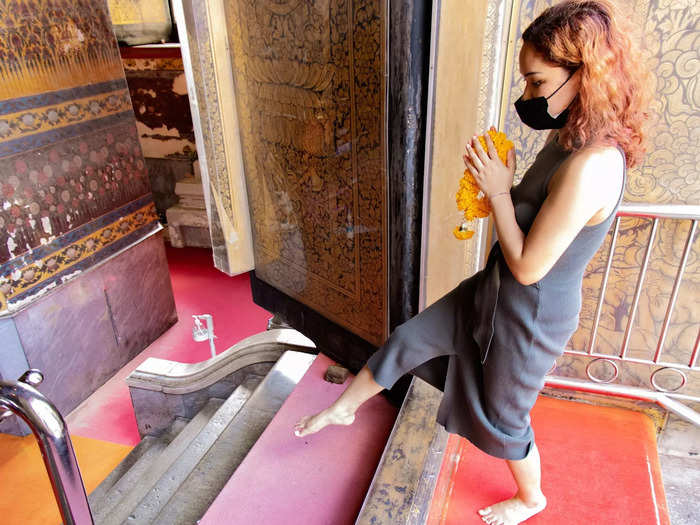
Many tourists know that taking off one's shoes is common practice at temples, but some remain unaware of the other golden rule: Never step on the threshold.
Puacksumran explained that stepping on the threshold is considered bad luck.
According to local news site Thaizer, the threshold represents a "barrier to keep out evil spirits" and many locals deem stepping on it disrespectful.
5. Try discerning your fortune by shaking sticks in an ancient fortune telling ritual called "kau chim."
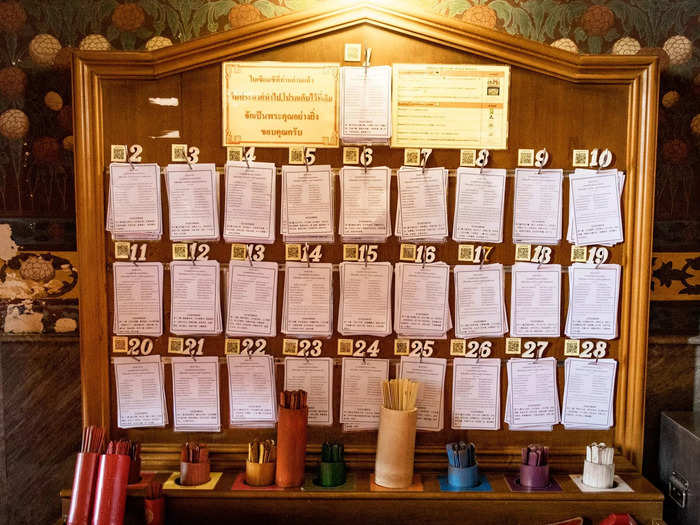
When I entered one of the shrines in Wat Kalayanamit, I heard the sound of wooden sticks being shaken in a container. Puacksumran told me locals believe that kau chim allows them to look into the future and receive answers to burning questions.
The ritual is as follows: shake a container filled with sticks until one stick lands on the ground, remember the number on the stick, and then match it with a numbered piece of paper on a board located at the back of the shrine. The numbered card usually has a revelation that's written in English and Thai.
6. Before leaving the temple, ring the bell — locals believe it offers protection and wards off evil spirits.
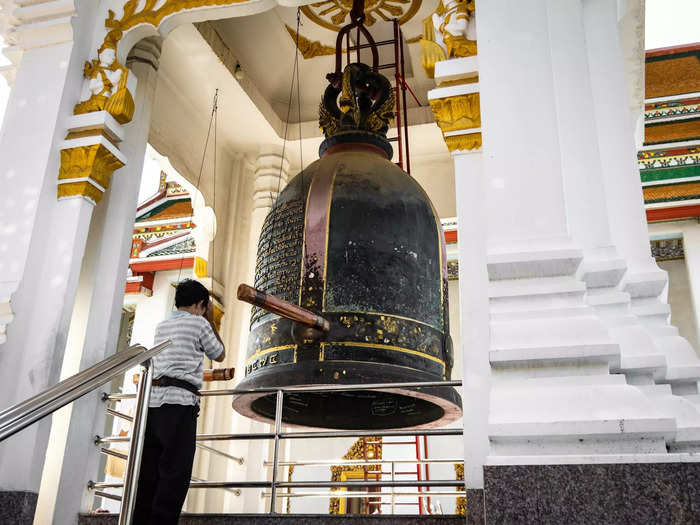
Traditionally, the bells are used by monks to tell time, according to The Bangkok Post. The bronze bell at Wat Kalayanamit is the largest in Thailand, weighing 13 tons, per local travel site Renown Travel.
While Puacksumran said the bells should be rung loudly for both people and spirits to hear, some locals disagree. One editor from The Bangkok Post wrote in a 2018 article that "Thais are very sensitive to noise" — so as a tourist, it's best to err on the side of caution and to be considerate when ringing the bell.
Popular Right Now
Popular Keywords
Advertisement